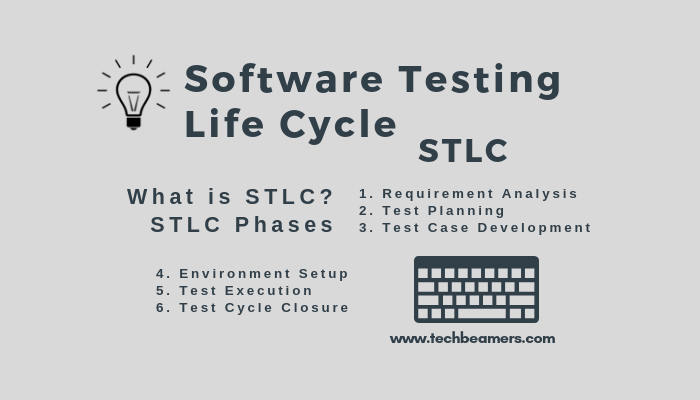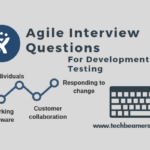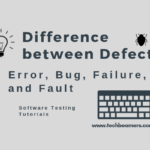This Software testing tutorial will help you understand the Software Testing Life Cycle (STLC) in simple and easy steps.
Understand the Software Testing Life Cycle
It is an essential topic that every software testing professional must know. Let’s decipher it step-by-step.
What is STLC? Please Explain.
STLC is an acronym for the Software Testing Life Cycle. It is a testing approach that proposes to carry out test execution in a systematic and planned way. In this model, many activities occur to improve the quality of the product.
What are STLC Phases?
The STLC model lays down the following steps:
1. Requirement Analysis
2. Test Planning
3. Test Case Development
4. Environment Setup
5. Test Execution
6. Test Cycle Closure
Requirement Analysis (RA) Phase
The requirement analysis (RA) is the first stage of the STLC model. In this step, the testing team learns what to test & determines the testable requirements. If some specifications are unclear, stakeholders like business analysts (BA), architects, and customers provide clarity.
The test team enters from the very beginning in the STLC. This helps to keep a tab on the new issues and limits their occurrence.
The test requirements in the STLC can vary from functional to non-functional areas like security, performance, and endurance. Additionally, the team can also evaluate the feasibility of automation in the.
The entry criteria in the RA phase are as follows.
1. Requirement specifications
2. Application design documents
3. Acceptance criteria
The test team performs the following tasks.
1. Provide a questionnaire for the customer-facing people.
2. List down the priority areas for testing.
3. Gather test environment details for carrying out the testing tasks.
4. Evaluate the possibility of test automation and prepare a report.
The following artifacts should originate as the output from this phase.
1. List of questions with answers from the customer-facing people.
2. Evaluation report on using automation (Optional)
Test Planning (TP) Phase
The second phase of STLC is the test planning. It is a crucial step as the team here defines the whole testing strategy for the project. Hence, it is also known as the Test strategy phase.
In this stage, the test lead has to get the effort and cost estimation done for the whole project. This phase starts soon after the RA phase is over. The outcomes of the TP include the Test Planning & Effort estimation documents. After the planning ends, the testing team can begin writing the test case development tasks.
The entry criteria in the TP phase are as follows.
1. Requirement documents (includes inputs on unclear and missing requirements).
2. Evaluation report on using automation
The test team performs the following tasks.
1. Provide a written objective & scope for the STLC cycle.
2. Mention the testing types to cover.
3. Estimate testing efforts and resource requirements.
4. Select the testing tools required.
5. Confirm the test infra requirements.
6. List down the testing schedule and set milestones.
7. Prepare a summary of the entire testing process.
8. Create a control policy.
9. Assign roles and responsibilities.
10. Outline the testing deliverables.
11. Conclude the entry criteria, suspension/resumption criteria, and exit conditions.
12. Mark the expected risks.
The following artifacts should originate as the output from this phase.
1. Test Plan (TP) document
2. Testing Effort Estimation (TEE) document
Test Case Development (TCD) Phase
The testing team starts test case development once the test planning (TP) phase is completed. In this stage of STLC, the principal activity is to write detailed test cases for the requirements.
While performing this task, they prepare the input data required for testing. Once the test plan is ready, it is reviewed by senior members or test leads.
One of the documents that the team has to produce is the Requirement Traceability Matrix (RTM). It is an industry-wide standard for ensuring the test cases are mapped with the requirement. It helps in tracking both the backward & forward direction.
The entry criteria in the TP phase are as follows.
1. Requirement documents (includes the latest changes)
2. Evaluation report on using automation
The test team performs the following tasks.
1. Write test cases.
2. Produce scripts for automation testing (Optional).
3. Gather test data required for test execution.
The following artifacts should originate as the output from this phase.
1. Detailed test cases
2. Required test data
3. Automation testing scripts (Optional)
Test Environment Setup (TES) Phase
Preparing the test environment is a time-consuming yet crucial activity in the STLC. It enables the team to determine the conditions for the application testing.
Since it is an independent task, it can run alongside test case writing. The team or any member outside the group can also help in setting up the testing environment. Some companies utilize a developer or the customer can also create or provide the testing beds. Simultaneously, the test team starts writing the smoke tests to ensure the readiness of the test infra.
The entry criteria in the TP phase are as follows.
1. The team has the test plan available.
2. Smoke tests are ready.
3. Test data is there for the individual tests.
The test team performs the following tasks.
1. Assess the need for new Software & hardware requirements.
2. Prepare the test infra.
3. Execute smoke tests and confirm the readiness of the test infra.
The following artifacts should originate as the output from this phase.
1. Test infra equipped with the test data
2. The smoke test execution report
Test Execution (TE) Phase
After the testing infra is ready, the test execution phase can start. In this stage, the team runs the test cases as per the test plan defined in the previous steps.
If a test case executes successfully, the team should mark it as Passed. If some tests fail, the defects should get logged, and the report should go to the developer for further analysis. As per the books, every error or failure should have a corresponding defect. It helps in tracing back the test case or the bug later. Once the dev team fixes it, the same test case should be executed and reported back.
If a test case fails due to some defect, it should be ignored and highlighted with the reason in the report. The test summary should show how many tests passed, failed, skipped, or did not run. It should run again after the defects are fixed and the report should show the latest state of all the test cases.
The entry criteria in the TP phase are as follows.
1. Test Plan (TP)
2. Test cases (TC)
3. Test data (TD)
The test team performs the following tasks.
1. Execute tests as per the test planning.
2. Provide test execution status showing the passed, failed, and skipped statistics.
3. Create defects for failed cases and assign them to the dev for resolution.
4. Perform re-execution of test cases that have got the defect fixes.
5. Make sure the defects get closed.
The following artifacts should originate as the output from this phase.
1. Test Case Execution Summary
2. Defect Summary
Test Cycle Closure (TCC) Phase
The testing team calls upon the meeting to evaluate the open defects, known issues, and code quality issues and accordingly decides on the closure of the test cycle.
They discuss what went well, where is the need for improvement, and note the pain points faced in the current STLC. Such information is beneficial for future STLC cycles. Each member puts his/her views on the test case & bug reports and finalizes the defect distribution by type and severity.
After the test cycle ends, the team should furnish the closure report & publish the quality metrics.
The entry criteria in the TP phase are as follows.
1. Details of the test case execution cycle
2. Execution Summary
3. Defect Summary
The test team performs the following tasks.
1. Define closure criteria by reviewing the test coverage, code quality., the status of the business objectives, and test metrics.
3. Produce a test closure report.
4. Publish best practices used in the current STLC.
The following artifacts should originate as the output from this phase.
1. Test closure report
2. Quality metrics report
3. Whitepaper on the best practices used (Optional)
Summary – Software Testing Life Cycle
We’ve tried to address the essential points of the Software Testing Life Cycle (STLC). Be sure to check out our other tutorial on product life cycle. We would love to know your feedback on this STLC tutorial.
Lastly, our site needs your support to remain free. Share this post on social media (Linkedin/Twitter) if you gained some knowledge from this tutorial.
Enjoy testing,
TechBeamers.









